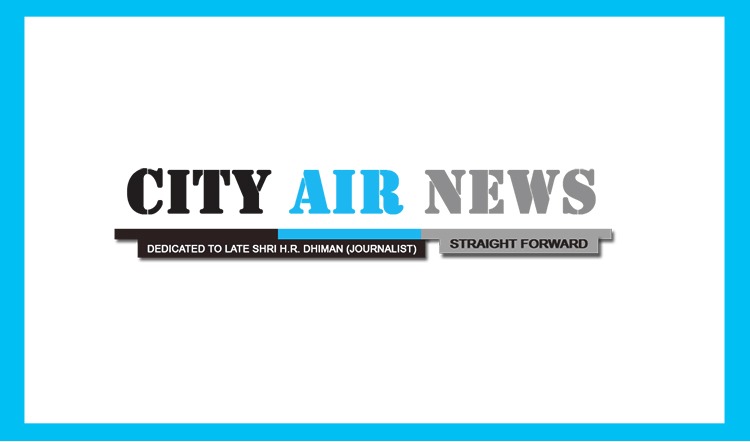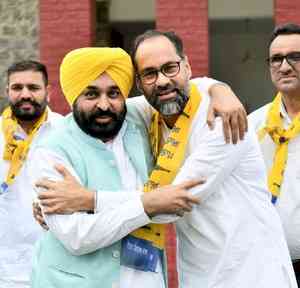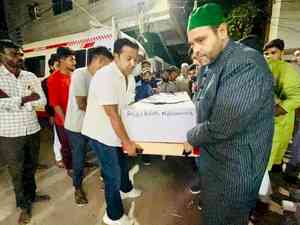Can a Third Front form a viable government? (Column: Political Circus)
Even as doubts remain as to whether the Bharatiya Janata Party (BJP) will be able to reach the coveted half-way mark in the Lok Sabha, the party's opponents are totting up the scores of the various regional parties to find out how close they...

Even as doubts remain as to whether the Bharatiya Janata Party (BJP) will be able to reach the coveted half-way mark in the Lok Sabha, the party's opponents are totting up the scores of the various regional parties to find out how close they can get to the benchmark of 272 seats with the Congress' help.
As of now, these estimates are an exercise in a political vacuum, for the regional parties haven't yet coalesced into a Third Front as the proposed scenario demands. Although the Congress has hinted that it is in favour of an understanding with the front as and when it is formed, both the offer and the guesswork on the number of seats are in the nature of wishful thinking.
In 2009, the non-Congress, non-BJP parties outside the United Progressive Alliance (UPA) won about 150 seats. If, to this figure is added the 20-odd seats won by the non-Congress parties in the UPA, then the total comes to 170. In case the Congress wins 100 seats this time, then the aggregate comes to 270 on the non-saffron side of the political divide.
If the number of seats won by the Aam Admi Party (AAP) and the YSR Congress (which weren't there in 2009) is added to the total of the Third Front-UPA parties, then the coveted target of 272 in a House of 543 elected MPs can be easily crossed.
However, there is many a slip between the cup and the lip. Among the imponderables is whether the front can at all be formed. At present, it does not exist. Bringing the concept to life will require considerable political skill by leaders whose careers so far have not always been marked by idealism and selfless labour.
In 2009, a front did come into existence, but it proved to be a chimera. The person who played a major role behind its formation - Prakash Karat of the Communist Party of India-Marxist (CPI-M) - is today a spent force. Of the others who have spoken of a federal front this time, West Bengal Chief Minister Mamata Banerjee is a poor tactician as the fiasco of her attempt to team up with Anna Hazare showed.
One difficulty with some of the others is that they are all prime ministerial aspirants, too focussed on their own ambitions to see the broader picture. Tamil Nadu Chief Minister Jayalalitha is one of the PM hopefuls. Her party, the AIADMK, is the only one (outside the BJP) which has formally advanced her claim.
It is noteworthy that ever since the AIADMK did so, Jayalalitha has distanced herself from the BJP although, at one time, she was seen as the saffron outfit's natural ally if only because the DMK, her arch-enemy, was with the Congress. It is not impossible that she has sensed in recent weeks that she has a reasonable chance of success in a bid for the top job if the AIADMK can emerge as largest party after the Congress in the Lok Sabha by winning a majority of the 39 seats in Tamil Nadu.
In that case, she may play a catalytic role in the Third Front's formation. The DMK will be mortified, of course, by the possibility of its bete noire becoming the PM, but it will be politically suicidal for it to prevent a Tamil from reaching the position. Similarly, the minor Tamil outfits, which are currently the BJP's allies, will have no option but to support the AIADMK czarina.
So far, only Mamata Banerjee, among the major leaders, has supported Jayalalithaa. But once it becomes clear that a Third Front-UPA tie-up is the only way to keep out Modi, others like Mulayam Singh Yadav, Nitish Kumar and Naveen Patnaik are likely to fall in line.
The set-up will be not unlike what happened when the Congress propped up Chandra Shekhar in 1990, and H.D Deve Gowda and I.K. Gujral between 1996 and 1998.
It is, however, obvious that the arrangement is not a recipe for stability. For a start, there will be no unanimity on economic policy between the socialists - Mamata Banerjee, Mulayam Singh and Nitish Kumar - and those in favour of an open economy like Naveen Patnaik and Sharad Pawar with Jayalalitha somewhere in between.
On foreign policy, the latter will undoubtedly pursue an aggressive line against Sri Lanka while the Left will try to scupper the nuclear deal. In all probability, therefore, the country will see another election by 2016. But, such a possibility is there even if Modi forms a government because his majority in the Lok Sabha cannot but be a thin one, making it vulnerable to the large group of regional parties acting along with the Congress.
The nation's predicament is evidently due to the personality and policy flaws among the top leaders of the two major parties. While Modi is undermined by the presence of anti-Muslim elements in his ranks, one of whom has asked Modi's critics to go to Pakistan, the Congress is hamstrung by its familiar malady of being prone to corruption and dependence on a feudal-minded family out of sync with the ideas of a globalized and competitive economy.
(Amulya Ganguli is a political analyst. The views expressed are personal. He can be reached at [email protected])

 cityairnews
cityairnews 















